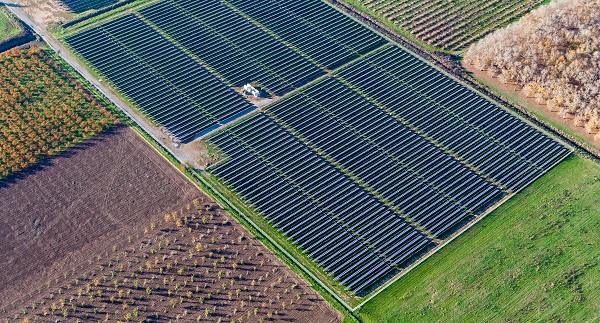We warned you, and now the latest monthly report on U.S. electrical infrastructure development provides a good reminder as to why it can be foolish to make too much of such short-term updates.
You might remember that a month ago, various news organizations portrayed the fact that solar had constituted 100 percent of the power generation added to the U.S. grid in March as a watershed event.

We said that solar was indeed inching into the mainstream but that the March report held no real meaning and was “mostly a quirk of the calendar” – and the new report [PDF], covering April’s infrastructure additions, bears that out.
In April, solar made up 2.5 percent of the new generation put in service.
Does that mean that solar has hit the skids?
Hardly. It means that a huge natural-gas fired plant, the 1,1157 Cape Canaveral Next Generation Clean Energy Center (how about that name?) went online in Florida in April.
Anyway, even more importantly, as always, the report, from the Federal Energy Regulatory Commission, covers only utility-scale power additions and so ignores the most important kind of solar that’s being developed: distributed generation. All the evidence is that on that count,solar continues toward another year of record installations in the U.S.
All that said, there were some interesting specific additions highlighted in the FERC report:
- Apple Data Centers’ 5.2 MW biogas-fired fuel cells Phase 3 expansion in Matawba County, NC is online. Phases 1 and 2 consist of a 21 MW solar unit and a 4.8 MW landfill gas-fired fuel cells unit, respectively. Phase 4, a 20 MW solar unit, is expected to come online in June 2013.
- PPL Montana LLC’s 62 MW Rainbow hydroelectric expansion project near Great Falls, MT is online. Smaller units from the 1910 to 1930 era with a combined 35 MW were replaced with the single 62 MW unit, increasing the power generated by 70 percent.
- SolarVision, LLC’s 5 MW Celina Solar Project I in Mercer County, OH is online. This solar project will produce enough power to meet about 8 percent of the City of Celina’s total energy demand.
- Arizona Public Service Co.’s 17 MW Foothills Solar Power Plant in Yuma, AZ is online. A second phase with 18 MW is expected to come online by year end.
- Light Beam Energy Inc’s 1.7 MW Gridley Main One Solar and 2.5 MW Gridley Main Two Solar in Butte County, CA are online. The power generated by each solar facility is sold to the City of Gridley and to the San Francisco Bay Area Rapid Transit under long-term contracts, respectively.
- Warsaw Solar 2 LLC’s 2 MW Warsaw Solar 2 in Duplin County, NC is online. The power generated is sold to Progress Energy Carolinas under long-term contract.
- Hannon Strong Solar LLC’s 1.4 MW Fort Bliss Solar in El Paso County, TX is online. The power generated is sold to the U.S. Army Fort Bliss under a long-term contract.